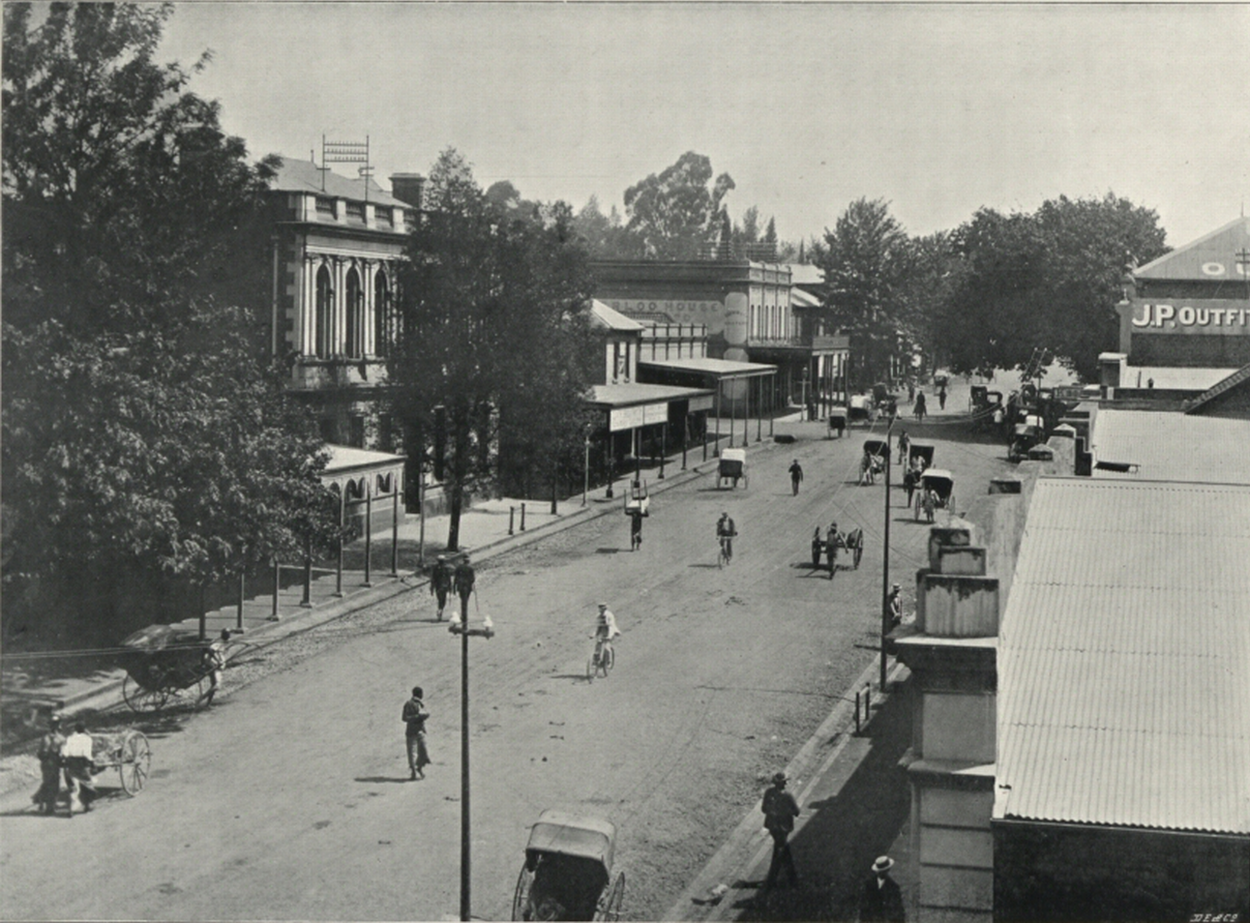|
South African Class 26 4-8-4
The South African Railways Class 26 4-8-4 of 1981, popularly known as the ''Red Devil'', is a 4-8-4 steam locomotive which was rebuilt from a Class 25NC locomotive by mechanical engineer David Wardale from England while in the employ of the South African Railways. The rebuilding took place at the Salt River Works in Cape Town and was based on the principles developed by Argentinian mechanical engineer L.D. Porta.The Ultimate Steam Page. ''David Wardale - Proposed 2-10-2+2-10-2 Garratt for China.'' (Accessed 29 July 2016) Origin The original locomotive from which the Class 26 was rebuilt entered service in 1953 as the last of the[...More Info...] [...Related Items...] OR: [Wikipedia] [Google] [Baidu] |
South African Railways
Transnet Freight Rail is a South African rail transport company, formerly known as Spoornet. It was part of the South African Railways and Harbours Administration, a state-controlled organisation that employed hundreds of thousands of people for decades from the first half of the 20th century and was widely referred to by the initials SAR&H (SAS&H in Afrikaans). Customer complaints about serious problems with Transnet Freight Rail's service were reported in 2010. Its head office is in Inyanda House in Parktown, Johannesburg. History Railways were first developed in the area surrounding Cape Town and later in Durban around the 1840s. The first line opened in Durban on 27 June 1850. The initial network was created to serve the agricultural production area between Cape Town and Wellington. The news that there were gold deposits in the Transvaal Republic moved the Cape Colony Government (supported by British Government) to link Kimberley as soon as possible by rail to Cape Town ... [...More Info...] [...Related Items...] OR: [Wikipedia] [Google] [Baidu] |
South African Class 25 4-8-4
The South African Railways Class 25 4-8-4 of 1953 was a condensing steam locomotive. Between 1953 and 1955, the South African Railways placed ninety condensing steam locomotives with a 4-8-4 Northern type wheel arrangement in service. The Class 25NC which was placed in service at the same time was a non-condensing version of the Class 25 condenser.South African Railways & Harbours/Suid Afrikaanse Spoorweë en Hawens (15 Aug 1941). ''Locomotive Diagram Book/Lokomotiefdiagramboek, 2'0" & 3'6" Gauge/Spoorwydte, Steam Locomotives/Stoomlokomotiewe''. SAR/SAS Mechanical Department/Werktuigkundige Dept. Drawing Office/Tekenkantoor, Pretoria. pp. VIII, 6a-7a, 29a. Background Owing to the difficulties experienced to obtain adequate supplies of suitable water in arid regions like the Great Karoo between Touws River and Kimberley and from De Aar into South West Africa (SWA), the South African Railways (SAR) began to give serious consideration to the possibility of introducing condensin ... [...More Info...] [...Related Items...] OR: [Wikipedia] [Google] [Baidu] |
Pietermaritzburg
Pietermaritzburg (; Zulu: umGungundlovu) is the capital and second-largest city in the province of KwaZulu-Natal, South Africa. It was founded in 1838 and is currently governed by the Msunduzi Local Municipality. Its Zulu name umGungundlovu is the name used for the district municipality. Pietermaritzburg is popularly called Maritzburg in Afrikaans, English and Zulu alike, and often informally abbreviated to PMB. It is a regionally important industrial hub, producing aluminium, timber and dairy products, as well as the main economic hub of Umgungundlovu District Municipality. The public sector is a major employer in the city due to local, district and provincial governments located here. The city has many schools and tertiary education institutions, including a campus of the University of KwaZulu-Natal. It had a population of 228,549 in 1991; the current population is estimated at over 600,000 residents (including neighbouring townships) and has one of the largest populatio ... [...More Info...] [...Related Items...] OR: [Wikipedia] [Google] [Baidu] |
Pretoria
Pretoria () is South Africa's administrative capital, serving as the seat of the Executive (government), executive branch of government, and as the host to all foreign embassies to South Africa. Pretoria straddles the Apies River and extends eastward into the foothills of the Magaliesberg mountains. It has a reputation as an academic city and center of research, being home to the Tshwane University of Technology (TUT), the University of Pretoria (UP), the University of South Africa (UNISA), the Council for Scientific and Industrial Research (CSIR), and the Human Sciences Research Council. It also hosts the National Research Foundation (South Africa), National Research Foundation and the South African Bureau of Standards. Pretoria was one of the host cities of the 2010 FIFA World Cup. Pretoria is the central part of the City of Tshwane Metropolitan Municipality which was formed by the amalgamation of several former local authorities, including Bronkhorstspruit, Centurion, Gaute ... [...More Info...] [...Related Items...] OR: [Wikipedia] [Google] [Baidu] |
Kimberley, Northern Cape
Kimberley is the capital and largest city of the Northern Cape province of South Africa. It is located approximately 110 km east of the confluence of the Vaal and Orange Rivers. The city has considerable historical significance due to its diamond mining past and the siege during the Second Anglo-Boer war. British businessmen Cecil Rhodes and Barney Barnato made their fortunes in Kimberley, and Rhodes established the De Beers diamond company in the early days of the mining town. On 2 September 1882, Kimberley was the first city in the Southern Hemisphere and the second in the world after Philadelphia, Pennsylvania in the United States to integrate electric street lights into its infrastructure. The first stock exchange in Africa was built in Kimberley, as early as 1881. History Discovery of diamonds In 1866, Erasmus Jacobs found a small brilliant pebble on the banks of the Orange River, on the farm ''De Kalk'' leased from local Griquas, near Hopetown, which was h ... [...More Info...] [...Related Items...] OR: [Wikipedia] [Google] [Baidu] |
Bloemfontein
Bloemfontein, ( ; , "fountain of flowers") also known as Bloem, is one of South Africa's three capital cities and the capital of the Free State (province), Free State province. It serves as the country's judicial capital, along with legislative capital Cape Town and Administration (government), administrative capital Pretoria. Bloemfontein is the seventh-largest city in South Africa. Situated at an elevation of above sea level, the city is home to approximately 520,000 residents and forms part of the Mangaung Metropolitan Municipality which has a population of 747,431. It was one of the host cities for the 2010 FIFA World Cup. The city of Bloemfontein hosts the Supreme Court of Appeal (South Africa), Supreme Court of Appeal of South Africa, the Franklin Game Reserve, :af:Naval Hill, Naval Hill, the Maselspoort, Maselspoort Resort and the :af:Sand du Plessis-teaterkompleks, Sand du Plessis Theatre. The city hosts numerous museums, including the National Women's Monument, th ... [...More Info...] [...Related Items...] OR: [Wikipedia] [Google] [Baidu] |
Cape Town
Cape Town ( af, Kaapstad; , xh, iKapa) is one of South Africa's three capital cities, serving as the seat of the Parliament of South Africa. It is the legislative capital of the country, the oldest city in the country, and the second largest (after Johannesburg). Colloquially named the ''Mother City'', it is the largest city of the Western Cape province, and is managed by the City of Cape Town metropolitan municipality. The other two capitals are Pretoria, the executive capital, located in Gauteng, where the Presidency is based, and Bloemfontein, the judicial capital in the Free State, where the Supreme Court of Appeal is located. Cape Town is ranked as a Beta world city by the Globalization and World Cities Research Network. The city is known for its harbour, for its natural setting in the Cape Floristic Region, and for landmarks such as Table Mountain and Cape Point. Cape Town is home to 66% of the Western Cape's population. In 2014, Cape Town was named the best place ... [...More Info...] [...Related Items...] OR: [Wikipedia] [Google] [Baidu] |
Salt River, Cape Town
Salt River is a suburb of Cape Town, located near Table Bay, to the east of Cape Town's central business district. Salt River is served by a railway station of the same name, and has the postcode 7925. It is noted for its association with the clothing and textiles industry. The name Salt River is a translation of the Dutch "Soutrivier". History Prior to its establishment as a community within Cape Town the area was inhabited by the Goringhaiqua Khoikhoi clan. In 1510 it was the scene of the Battle of Salt River between the Portuguese and the Goringhaiqua. Once a booming part of Cape Town because of its close proximity to the CBD, Salt River was the industrial heart of Cape Town. The steel and locomotive industries were important in the suburbs' early development due to the expansion of the rail network in the early 1900s. Up until the late 1980s prominent industries also included textile and clothing manufacturing. However, due to the influx of cheaper, imported clothing ma ... [...More Info...] [...Related Items...] OR: [Wikipedia] [Google] [Baidu] |
4-8-2
Under the Whyte notation for the classification of steam locomotives, represents the wheel arrangement of four leading wheels, eight powered and coupled driving wheels and two trailing wheels. This type of steam locomotive is commonly known as the Mountain type. Overview The Colony of Natal in South Africa and New Zealand were innovators of the Mountain wheel arrangement. The Natal Government Railways (NGR) placed in service the first tank engines with the 4-8-2 arrangement, and the NGR was also first to modify tender locomotives to use a 4-8-2 wheel arrangement. The New Zealand Railways Department (NZR) introduced the first tender locomotives designed and built as 4-8-2. In 1888, the Natal Government Railways placed the first five of its eventual one hundred Class D tank locomotives in service. The locomotive was designed by William Milne, the locomotive superintendent of the NGR from 1877 to 1896, and was built by Dübs & Company. This was the first known use of the whe ... [...More Info...] [...Related Items...] OR: [Wikipedia] [Google] [Baidu] |
South African Class 19D 4-8-2
{{Infobox locomotive , name = South African Class 19D 4-8-2 , image = SAR Class 19D No. 2685 - Wesley - Umgeni Steam Railway.jpg , alt = , caption = Umgeni Steam Railway's no. 2685, 30 July 2006 , hatnote = ♠ Numbers 2506-2545 – {{font color, red, ♥ Numbers 2626-2640{{font color, blue, ♣ Numbers 2641-2680 – {{font color, magenta, ♦ Numbers 2681-2720{{font color, blue, ʘ Numbers 2721-2770 – {{font color, red, ʘ Numbers 3321-3370{{font color, red, T MT tender – {{font color, red, P MP1 tender – {{font color, red, X MX tender , powertype = Steam , designer = South African Railways(W.A.J. Day) , builder = Friedrich Krupp Borsig Lokomotiv Werke Škoda WorksRobert Stephenson & HawthornsNorth British Locomotive CompanyHenschel & Son , ordernumber = , serialnumber = See table , buildmodel = Class 19D , builddate = 1937–1953 , totalproduction = 268 , ... [...More Info...] [...Related Items...] OR: [Wikipedia] [Google] [Baidu] |
Krupp
The Krupp family (see pronunciation), a prominent 400-year-old German dynasty from Essen, is notable for its production of steel, artillery, ammunition and other armaments. The family business, known as Friedrich Krupp AG (Friedrich Krupp AG Hoesch-Krupp after acquiring Hoesch AG in 1991 and lasting until 1999), was the largest company in Europe at the beginning of the 20th century, and was the premier weapons manufacturer for Germany in both world wars. Starting from the Thirty Years' War until the end of the Second World War, it produced battleships, U-boats, tanks, howitzers, guns, utilities, and hundreds of other commodities. The dynasty began in 1587 when trader Arndt Krupp moved to Essen and joined the merchants' guild. He bought and sold real estate, and became one of the city's richest men. His descendants produced small guns during the Thirty Years' War and eventually acquired fulling mills, coal mines and an iron forge. During the Napoleonic Wars, Friedrich Kr ... [...More Info...] [...Related Items...] OR: [Wikipedia] [Google] [Baidu] |






.jpg)

